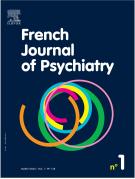Measuring implicit associations between food categories, moral attributes and bodily representations in anorexic patients - 29/05/20
 , C. Lakritz 1, 6, L. Tournayre 1, 2, V. Iceta 3, P. Duriez 4, C. Foulon 5, V. Masetti 5, J. Monthuy-Blanc 2
, C. Lakritz 1, 6, L. Tournayre 1, 2, V. Iceta 3, P. Duriez 4, C. Foulon 5, V. Masetti 5, J. Monthuy-Blanc 2Résumé |
Restrictive dieting is one of the main factors contributing to the persistence of anorexia nervosa (AN). However, food categorization performance and strategy in AN patients remain under-researched. The aim of the present study is twofold:
– to investigate food categorization strategies and performance in AN patients;
– to capture implicit associations between food, moral attributes (Expe. 1) and bodily representations (Expe. 2).
Expe. 1. Two hypotheses have been tested: (H1) food transformation is implicitly associated to “impurity” whereas food naturalness is implicitly associated to “purity” and (H2) the strength of these implicit associations is different in AN patients compared to control subjects. Patients (female, n=32, mean age=24.4 y.±4.7) and control subjects (female, n=32, mean age 24,7 y.±3.4) were asked to complete a Go/No-go Association Task (GNAT). Reaction times analyses confirmed (H1), both patients and control subjects’ RTs were shorter in the congruent compared to incongruent conditions. Expe. 2. Two hypotheses have been tested: (H1) pictures of energy high foods are implicitly associated with pictures of overweight silhouettes and energy low foods are implicitly associated with underweight silhouettes in both populations (H2) AN patients exhibit specific categorization performance and/or strategies. Thirty female between 18 and 35 years were tested: patients (n=15, mean BMI=16.9) and control subjects (n=15, mean BMI=22.2) were asked to complete a GNAT. Analyses of errors confirm (H2). Indeed, in congruent conditions patients differ from control subjects with respect to their decision criterion (B″). Indeed, AN patients were very liberal compared to control subjects when detecting energy high foods and overweight silhouettes (i.e. higher proportion of “yes” response even on distractors) and are very conservative when it comes to detect energy low foods and underweight silhouettes. To conclude, results of Expe:
– confirmed the existence of implicit associations between food categories and moral attributes in both anorexic patients and control. Results of Expe;
– confirmed that patients differ from control subjects with respect to their decision criterion on both food and bodily visual stimuli.
To conclude, the GNAT on both bodily and food stimuli represents a promising way of detecting AN and sheds new light on the cognitive mechanisms underlying restrictive dieting and bodily self-knowledge impairments characterizing AN patients.
Le texte complet de cet article est disponible en PDF.Keywords : Implicit associations, Food, Bodily representations, Moral attributes, Anorexia, Psychophysics
Plan
Vol 1 - N° S2
P. S119-S120 - décembre 2019 Retour au numéroBienvenue sur EM-consulte, la référence des professionnels de santé.
L’accès au texte intégral de cet article nécessite un abonnement.
Déjà abonné à cette revue ?

